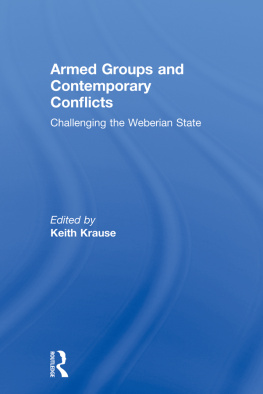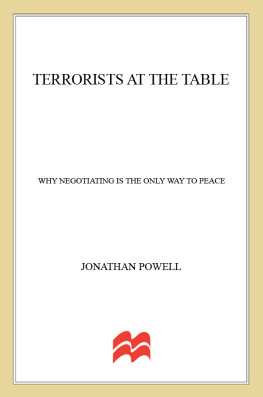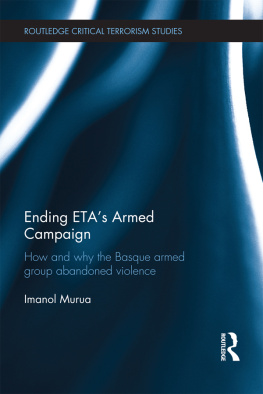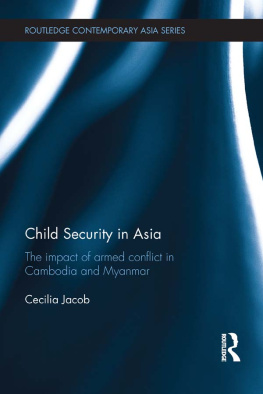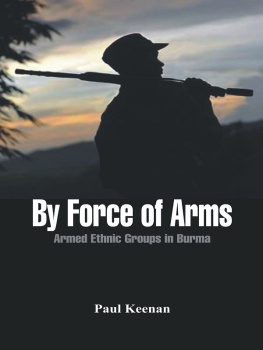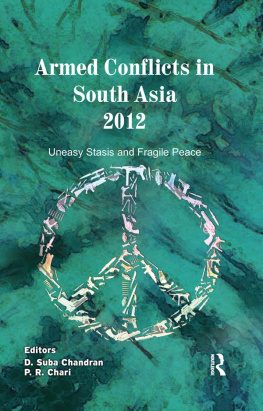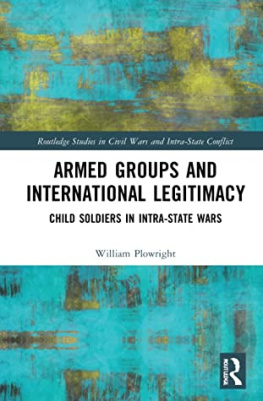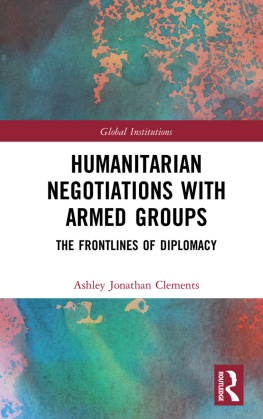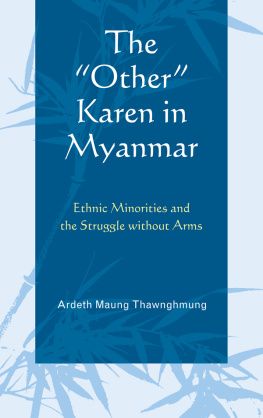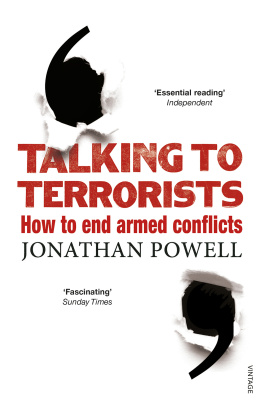Acknowledgments
This book has taken rather longer than I optimistically had expected, and during research and writing I have incurred innumerable debts. Colleagues, friends, and interlocutors made time for me in India, Sri Lanka, Thailand, Burma/Myanmar, and Singapore over the last dozen years as I tried to understand complicated, often confusing patterns of cooperation and conflict between governments and armed groups. I owe particular thanks to Mirza Zulfiqur Rahman, David Mathieson, Pratap Bhanu Mehta, and Terence Lee for providing exceptional help in facilitating this research, and the Centre for Policy Research in New Delhi and ISEASYusof Ishak Institute in Singapore for institutional bases.
Two recurring workshop series have been valuable in helping me develop the ideas in this manuscript. First, the Program on International Security Policy and its successor, the Workshop on International Politics, at the University of Chicago has long been a place to hear incredibly smart people play with ideas; it has also helped me hone my own thinking. John Mearsheimer, Bob Pape, Bobby Gulotty, Rochelle Terman, Austin Carson, and Paul Poast have built an exceptional workshop culture. All of them have also provided incisive feedback on this project. Second, the annual India Security Studies workshop, hosted first by the Center for the Advanced Study of India at the University of Pennsylvania, and now by the Johns Hopkins University School of Advanced International Studies and the Carnegie Endowment for International Peace, has been a unique home for rigorous but policy-engaged work on India. I thank Devesh Kapur for his years of leadership.
I was lucky enough to receive detailed feedback on the project at two events. First, I organized a small conference at the University of Chicago on ideas and political violence in 2016 that featured research by and feedback from Elisabeth Wood, Ron Hassner, Scott Straus, the late and much-missed Lee Ann Fujii, Rich Nielsen, and Jonathan Maynard Leader. I am in their debt. Second, the Harry Frank Guggenheim Foundation, spearheaded by the incomparable Joel Wallman, hosted a book workshop for me in 2019. I am deeply grateful to Lisa Blaydes, Sameer Lalwani, Jake Shapiro, Erica Chenoweth, Laia Balcells, Carter Malkasian, and Eugene Finkel for taking the time to give exceptional feedback on the project. The book is dramatically better as a result of their comments.
I am extremely grateful to participants at seminars and conferences at Princeton, Northwestern, Brown, George Washington, Emory, Ohio State, the University of Pennsylvania, Boston College, MIT, Yale, Uppsala University, Wisconsin, Texas A&M, Michigan, the National University of Singapore, the University of California at Berkeley, the University of Connecticut, and Northern Illinois University. I also hope this book carries forward the spirit of Yales Program on Order, Conflict, and Violence.
Numerous other individuals have been gracious with their time and insights. Ben Lessing and I have had many conversations on the themes covered in the following pages. I owe a great deal to his incredibly creative mind. I cotaught a course on civil wars in 2018 with Lisa Wedeen that sharpened my thinking on key issues. Roger Petersens early reaction to this project, centered around an anecdote from The Wire, is an example of how he has spurred new ideas for generations of students. Dann Naseemullah and I have worked collaboratively and individually on topics related to this book, and I have greatly benefited from his incredible range and expertise; his own book will be a major contribution. I am especially indebted to Asfandyar Mir and Sameer Lalwani for their coauthorship of an article that forms part of chapter 6, as well as teaching me so much about South Asias conflict landscape. As always, I am deeply grateful to Vipin Narang and Caitlin Talmadge for being dear friends and wise professional sounding boards. The University of Chicago Center for International Social Science Research, led by the indefatigable Jenny Trinitapoli, was the home to a wonderful Thursday afternoon writing group that kept this project afloat even in the busiest of times.
For valuable feedback and insightful conversations, I thank Dan Slater, Stathis Kalyvas, Abbey Steele, Kristine Eck, Jason Lyall, Severine Autesserre, Yuhki Tajima, Anit Mukherjee, Charles Glaser, Michael Weintraub, Ana Arjona, Amit Ahuja, Christian Davenport, Josh Shifrinson, Rahul Sagar, Will Norris, Jeremy Pressman, Betty Hanson, Monika Nalepa, Stephen Biddle, Ashutosh Varshney, Janet Lewis, Aila Matanock, Lee Seymour, Rajesh Rajagopalan, Keren Yarhi-Milo, Taylor Fravel, Tanisha Fazal, Stein Tnnesson, Steven Wilkinson, Austin Long, Michael Horowitz, Elizabeth Saunders, Joakim Kreutz, Will Reno, James Mahoney, Milan Vaishnav, Maya Tudor, Wendy Pearlman, Dan Krcmaric, Karen Alter, Dan Reiter, Peter Krause, Austin Long, Ches Thurber, Barbara Walter, Mike Albertus, Ian Chong, Bethany Lacina, Joshua White, Srinath Raghavan, Manjari Chatterjee Miller, Jessica Weeks, Peter Andreas, Rikhil Bhavnani, Sarah Daly, Forrest Stuart, Matthias Staisch, Erica Simmons, Michael Reese, Nadav Shalef, and Alberto Simpser. Apologies to those whom I have inadvertently omitted.
A group of excellent University of Chicago PhD and MA students have offered their thoughts on this project, both in early and advanced forms, over the years. I sincerely thank Asfandyar Mir, Ahsan Butt, Sana Jaffrey, Morgan Kaplan, Drew Stommes, Lindsey ORourke, Aidan Milliff, Mashail Malik, Alexandra Chinchilla, Sarah Parkinson, Chris Price, Jon DePoyster, Jonathan Obert, Kevin Weng, Genevieve Bates, Noah Schouela, Katy Lindquist, Madeleine Stevens, and Andres Uribe for their insights.
A stellar group of research assistants worked on the Armed Orders in South Asia (AOSA) data project over the last half-decade. Their work has been invaluable. Winston Berg, Wenyan Deng, Bryan Popoola, Erik Mueller, Nasir Almasri, and Basil Bastaki provided exceptional leadership of these teams. I am grateful to Drew Stommes, Norm Kemble, Reja Younis, Christian Godwin, Matthew Koo, Elayne Stecher, Nandhana Sajeev, Gamarnik, Rida Ashfaq, Mengting Luo, Xunchao Zhang, Robin Morris, Joseph Greenbaum, Maddie Stevens, Rhea Mahanta, Chris Dictus, Purnia Siddiqui, Rashmi Muraleedhar, Noa Levin, Raghuveer Nidumolu, and Patrick Burke.
I am extremely grateful to a number of institutions for their financial support. The Harry Frank Guggenheim Foundation funded essential field research in 2013 and a book workshop in 2019. The East Asian Peace program at Uppsala University, led by Stein Tnnesson, provided exceptional assistance during a crucial early period for the project. The Smith Richardson Foundation took a chance on the project and funded extensive data collection. Award W911-NF-1710044 from the Department of Defense and US Army Research Office/Army Research Laboratory under the Minerva Research Initiative, with Ben Lessing, was essential for funding the dataset and qualitative narratives, and for buying out courses that provided time for research. The views expressed are those of the author and should not be attributed to the Department of Defense or the Army Research Office/Army Research Laboratory. I am deeply appreciative of the University of Chicagos Social Sciences Division and its deans during this projectMario Small, David Nirenberg, and Amanda Woodwardfor funding and research support.
Roger Haydon showed early interest in this project, even when it was years away from completion, and provided astute and candid advice through to the offer of a contract. I very much hope he is enjoying his retirement. Mahinder Kingra, Ellen Labbate, and Karen Laun skillfully moved the manuscript forward. I am grateful to Jack Rummel for his excellent copyediting and to Judy Kip for her indexing skills. Two exceptional anonymous reviewers provided remarkably insightful, rigorous, and detailed feedback.



